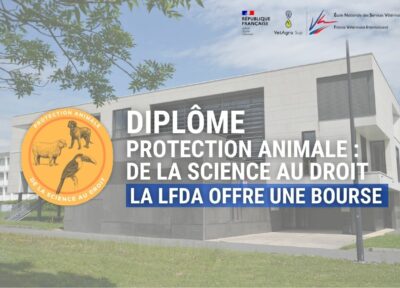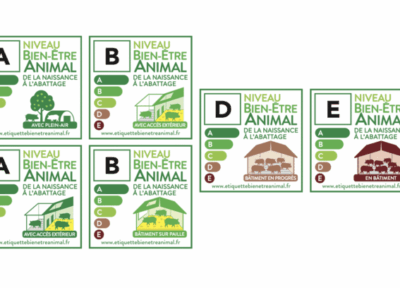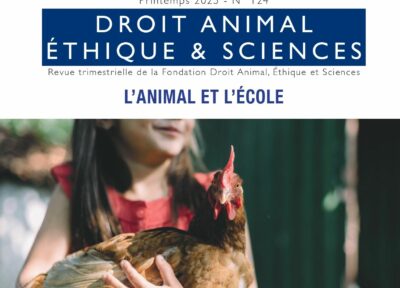by Patrick Dehaumont
Veterinary doctor, Chief Executive of the Directorate General for Food,
Ministry of Agriculture, Food-processing Industry and Forest
The following information and additional information are available here.
Priority action plan for “animal welfare”
The animal welfare plan clearly falls into the agro-ecological approach. The ambition is to support French initiatives at the European and international levels.
Point 1: know and innovate to adapt to a moving world
1. Creation of a national reference centre on animal welfare in 2016, whose mission is to provide scientific and technical support to all stakeholders, particularly livestock farmers, and to contribute to the dissemination of research outcomes and technical innovations.
2. Promote and support innovation in order to continue the development of animal welfare practices: € 4.3m will be granted to the project of sexing embryos in eggs, as part of the “investment programme for future”.
3. Integrate animal welfare as one of the priority thematics of the “Agriculture Innovation 2025” plan and “Innov’action” plan of the chambers of agriculture.
Point 2: Make farmers the principle operator in the welfare of their animals
4. Promote the virtuous practices of the sectors and favour the implementation of good practices guides and charters drafted by professionals.
5. Set up a platform dedicated to training as part of the national reference centre on animal welfare in order to promote and facilitate access to all the training courses for all stakeholders and allow, when necessary, the update of training requirements in line with new knowledge.
6. Rely on the veterinarians’ expertise specifically through their mandate from the government and thus reaffirm their role at the core of the animal welfare plan.
Point 3: continue the evolution towards animal welfare practices
7. Accompany farmers into the modernisation of barn structures, equipment and material and into the enrichment of animals’ living environment through identifying and activating the financial leverage of the second pillar of the common agriculture policy.
8. Provide livestock farmers with technical tools to allow an even better prevention and managing of pain in their animals through the use of local analgesics and anaesthetics by farmers, and the implementation of training.
9. Encourage alternatives to painful practices such as castration or beak and tooth trimming.
10. Support the development of alternative techniques to the use of animals for scientific purposes: pursue the approach of the 3Rs (reduce, refine, replace).
Point 4: reaffirm the requirement of protecting animals at slaughterhouse
11. Reinforce State control: reaffirm the role of inspection by veterinary services at slaughterhouses (priority inspection field, staff supervision, crossed inspections, exchange of practices), increase the level of sanctions in case of proven mistreatments.
12. Reinforce vigilance inside slaughterhouses: generalise the nomination of a person responsible for the control of the methods of killing the animals in every facility, adapt their training, structure the network of these responsible people, organise formal meetings between the slaughterhouse’s management and the departmental services for the protection of the population, protect all the staff in case of the notification of a problem.
13. Promote the modernisation of stunning structures and materials in abattoirs and support the research of alternative techniques (particularly alternatives to CO2 stunning).
14. Make practices evolve to better implement the regulation related to the transport of animals through an inventory of good practices, and define the methods to implement slaughter on the farm.
Point 5: accompany livestock farmers with serious difficulties and overcome care deficit
15. Detect livestock farmers with serious difficulties at an early stage through favouring synergy among all stakeholders thanks to the implementation of prevention operational units.
16. Improve the time period for taking over the animals through shorteningthe procedure to withdraw the animals and through the internal expertise of the departmental services for the protection of the population network.
Point 6: fight against the abandonment of companion and leisure animals
17. Pursue the legal framework of companion animals’ husbandry and trade in order to fight against abandonment of animals and promote responsible ownership: developing awareness and communication tools for (future) companion or leisure animals’ owners.
Point 7: Do well and make it known
18. Make objective information on the definition of animal welfare and how it is applied in farms available to consumers. Enhance French production assets such as free-range farming through quality and origin certifications (organic label, Label Rouge, protected or controlled designations of origin (AOP/AOC)), in order to increase the agro-ecological approach of the agricultural sectors.
19. Raise the work of professionals and the strengths of the French livestock farming at the European level, and promote the principle of reciprocity in the commercial trade with third countries.
20. Make the progress of the national plan for animal welfare public through the implementation of follow-up indicators of priority actions.




